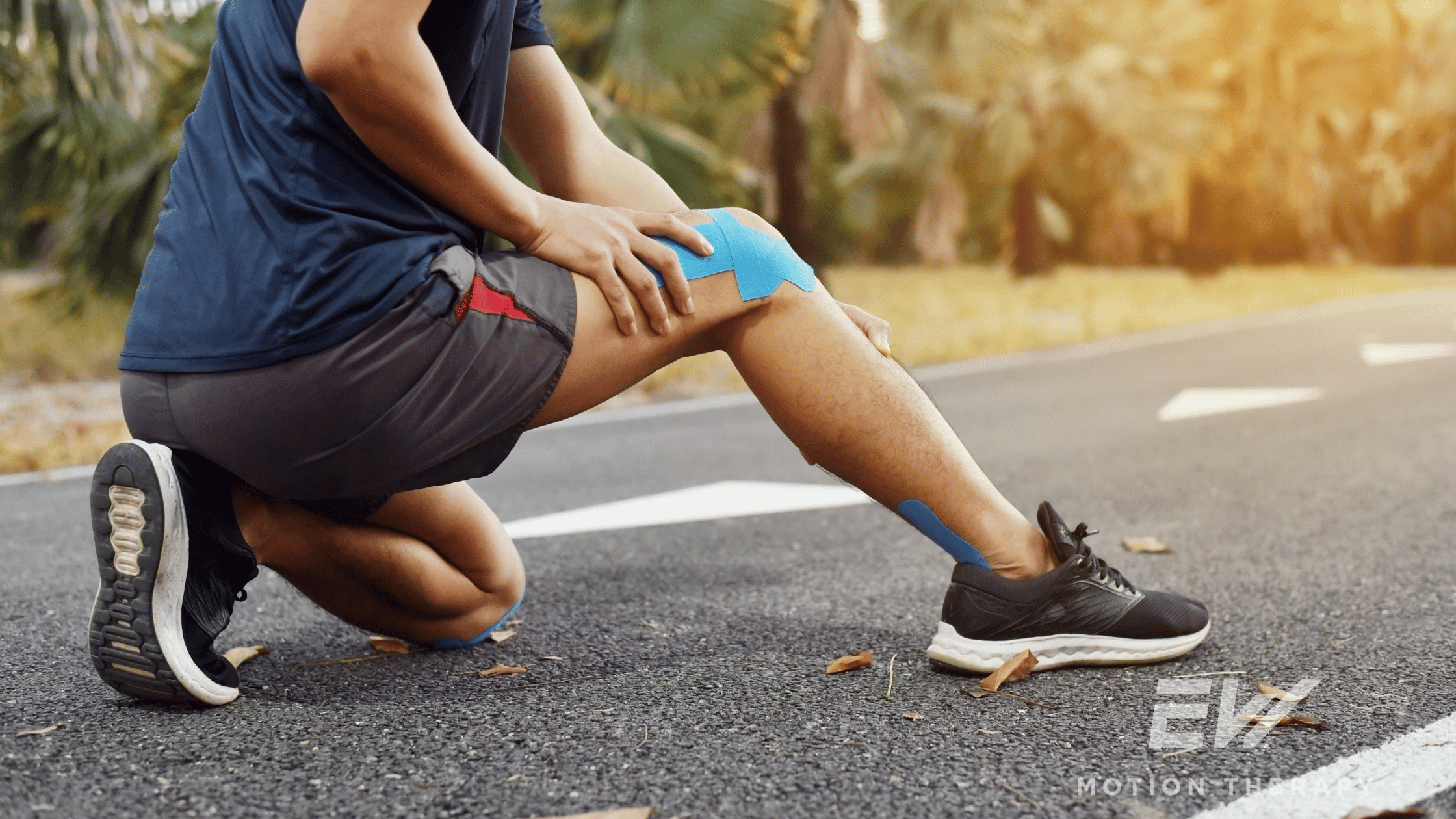Preventing ACL Injuries: Common Causes and the Role of Physical Therapy

Licensed Physical Therapist, PT, DPT // EW Motion Therapy Trussville
Anterior cruciate ligament (ACL) injuries are among the most common and severe injuries experienced by athletes and physically active individuals. These injuries can significantly impact mobility, physical performance, and overall quality of life. At their worst, they can cancel an athlete’s entire season or prevent them from getting a scholarship. We love helping our athletes at EW Motion Therapy with injury prevention and recovery - ACL tears can happen, but our ultimate goal is getting you back on the field. You may decide that our services at EW don’t fit your needs, but to understand the best ways to prevent ACL injuries, it is essential to review their causes, recognize who is at greater risk, learn how to implement effective prevention strategies, and discuss how physical therapy can aid in both prevention and recovery.
Anatomy review: what is the ACL?
The anterior cruciate ligament is one of the key ligaments that help stabilize the knee joint. It is located in the center of the knee, running diagonally through the middle, and connects the thigh bone (femur) to the shin bone (tibia). The ACL plays a crucial role in maintaining the knee's stability by:
- Preventing forward movement: It prevents the tibia from sliding too far forward relative to the femur, a motion that can destabilize the knee.
- Controlling rotation: The ACL also helps control the knee’s rotational stability, particularly during movements that involve turning, twisting, or pivoting.
An injury to the ACL can range from a mild sprain to a complete tear, significantly affecting the knee's stability and function. These injuries often occur during activities that involve sudden stops, changes in direction, or direct impacts on the knee, making it essential to understand and implement prevention strategies.

Common causes of ACL injuries
ACL injuries typically occur due to sudden changes in direction, abrupt stops, or awkward landings from jumps. These movements place excessive strain on the knee joint, particularly the ACL, leading to tears or ruptures. Typical scenarios where ACL injuries occur include:
- Sports activities: High-risk sports such as soccer, basketball, football, and skiing involve rapid directional changes, pivoting, and jumping, increasing the likelihood of ACL injuries.
- Improper technique: Poor biomechanics during sports and physical activities can place undue stress on the knee joint. Incorrect landing techniques, for example, can increase the risk of injury.
- Physical collisions: Direct blows to the knee, often occurring in contact sports, can cause ACL injuries. These collisions can cause the knee to hyperextend or twist unnaturally, leading to ligament damage. Collisions could also occur during a car accident or as the result of a work injury.
- Weakness and imbalances: Muscular imbalances, particularly weak hamstrings relative to the quadriceps, can predispose individuals to ACL injuries. The hamstrings help stabilize the knee, and when they are weak, the ACL is more vulnerable.
Who is more susceptible to ACL injuries?
Specific individuals and groups are more prone to ACL injuries due to various factors:
- Athletes: Those participating in high-intensity sports with frequent cutting, pivoting, and jumping are at a higher risk. Soccer, basketball, and volleyball are particularly associated with higher ACL injury rates.
- Women: Female athletes have a higher incidence of ACL injuries compared to their male counterparts. This increased susceptibility is attributed to anatomical differences, hormonal influences, and variations in muscle strength and neuromuscular control.
- Youth athletes: Young athletes with growing bones and developing muscles are more susceptible to ACL injuries. Proper training and conditioning are crucial during these formative years.
- Individuals with previous injuries: A history of knee injuries, specifically prior ACL tears, increases the risk of re-injury. Adequate rehabilitation and preventive measures are essential for these individuals to heal appropriately.
- Genetics: Some individuals may have genetic predispositions that affect ligament strength and joint stability, increasing their risk of ACL injuries.
Best prevention methods for ACL injuries
Preventing ACL injuries requires a multifaceted approach that includes strength training, flexibility exercises, and proper technique. For athletes, it is essential to train both during the season and in the off-season to improve balance and coordination. Here are some of the best training protocols to help prevent injury:
Strength and conditioning
- Strengthening exercises: Focus on exercises that strengthen the muscles around the knee, particularly the quadriceps, hamstrings, and glutes. Squats, lunges, and hamstring curls can help build up these muscle groups.
- Core stability: A strong core provides better overall strength and control, reducing the strain on the knees. Incorporate exercises like planks, bridges, and medicine ball twists into your routine.
Flexibility and mobility
- Stretching: Regular stretching of the hamstrings, quadriceps, calves, and hip flexors improves flexibility and reduces the risk of injury. Include dynamic stretches before activities and static stretches afterward.
- Foam rolling: A foam roller releases muscle tension and improves tissue elasticity. This can help prevent imbalances and maintain optimal muscle function.
Neuromuscular training
- Proprioceptive exercises: Balance and proprioceptive training enhance the body's ability to control joint position and movement. Exercises such as single-leg stands, balance boards, and agility drills are beneficial.
- Plyometrics: Incorporate plyometric exercises like jump squats and box jumps to improve explosive strength and landing mechanics. Focus on proper technique to avoid undue stress on the knees.
Technique and form
- Proper landing techniques: Learn and practice correct landing techniques, such as landing softly with knees slightly bent and aligned over the toes. This reduces the impact on the knee joint.
- Cutting and pivoting techniques: Properly executed cutting and pivoting movements minimize the risk of ACL injuries. To master these techniques, train under the guidance of a coach or physical therapist.
How physical therapy helps ACL injury prevention and recovery
Physical therapy is crucial in preventing ACL injuries and aiding recovery. Here's how physical therapy can help:
Prevention
- Individualized assessment: Physical therapists can assess an individual's biomechanics, muscle strength, and flexibility to identify potential risk factors. Personalized exercise programs can then be designed to address these weaknesses.
- Education: Physical therapists educate individuals on proper techniques, body awareness, and injury prevention strategies so they can perform activities safely and effectively. They will walk the patient through drills to reinforce safe movement patterns.
- Neuromuscular training: Physical therapists provide specialized neuromuscular training to enhance agility, joint stability, and coordination. This training improves proprioception and reduces the likelihood of injury.
Recovery
- Rehabilitation programs: After an ACL injury, physical therapists design comprehensive rehabilitation programs to restore strength, flexibility, and function. These programs are tailored to the individual's needs and progress gradually.
- Manual therapy: Techniques such as joint mobilization and soft tissue massage help reduce pain, improve mobility, and promote healing.
- Functional training: Physical therapists incorporate functional training to simulate real-life activities and sports movements. This ensures a safe return to normal activities and reduces re-injury risk.
- Psychological support: Physical therapists provide emotional support and motivation throughout recovery. This holistic approach addresses both the physical and mental aspects of recovery.
Preventing ACL injuries requires a proactive approach that combines strength training, flexibility exercises, proper technique, and the expertise of physical therapists. By understanding the common causes, recognizing those at higher risk, and implementing effective prevention strategies, individuals can significantly reduce their likelihood of experiencing an ACL injury. For those recovering from an ACL injury, physical therapy offers a comprehensive path to regaining strength, function, and confidence. Our goal for every client at EW Motion Therapy is to help them enjoy their favorite activities pain-free - to learn more about what physical therapy might cost you, click the button below to download our free pricing guide.


